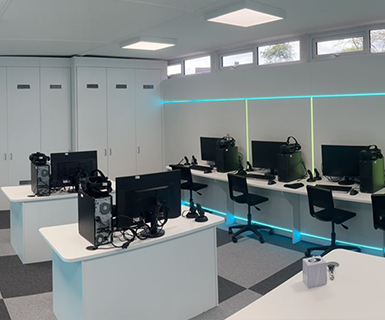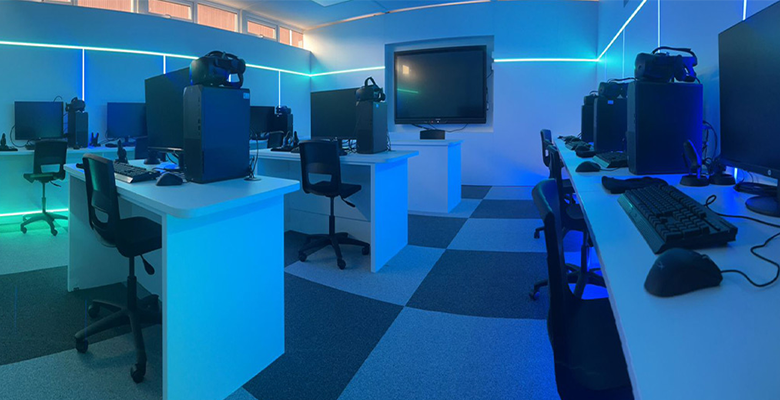VR Classrooms, UK Pioneers in Education
The UK’s augmented reality (AR) and virtual reality (VR) sector is a pioneer in the digital revolution, with the fastest growing market in Europe. The growth rate for spending on AR is predicted to reach £62.5 billion by 2030 and the UK offers significant opportunities for investors.
Today, with the advent of augmented reality (AR) and virtual reality (VR), we are witnessing a new era of education, one that offers immersive experiences and interactive learning. VR is a powerful tool for students, where they can apply their knowledge in realistic settings and increase transfer of learning to the real world. Additionally these technologies can cater to different learning styles and enhance collaboration and teamwork in the classroom.
However, implementing AR and VR requires a significant investment in technology and training for teachers. Despite the cost, the benefits of these technologies make it a worthwhile investment in the future of education.
Whilst still in its infancy, there are many examples of pioneering educators across the UK, adopting the technology and here are a few examples:
-
Officially opening in September 2023, University of London has entered into a three year partnership with ARuVR, to open UK’s largest AR/VR design learning centre.
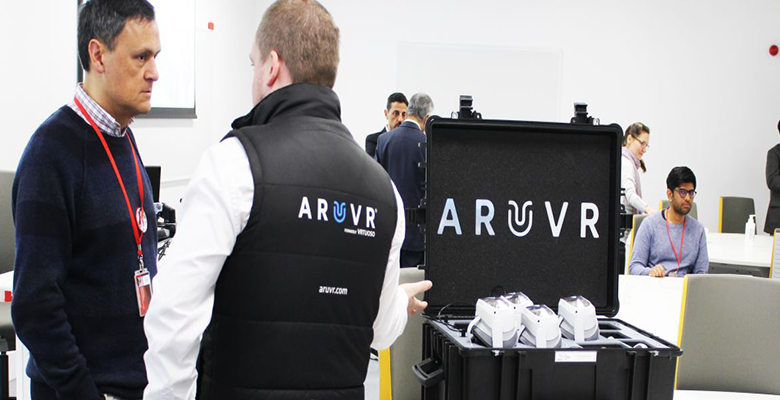
Source: City.ac.uk/News
2. Redhill High School, an independent secondary school in Pembrokeshire, is to pilot an immersive virtual reality environment to help pupils manage their mental health.
3. Imperial College London, has become the first medical school to train doctors in emergency situations
4. Redham House School in Berkshire is transforming into a metaverse school by providing students with VR headsets for studying subjects such as science, history, art geography and more…..
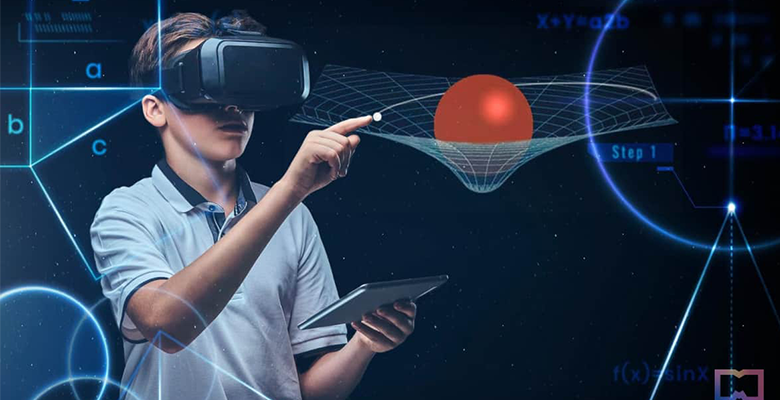
Source: Metaverse News
What are the benefit of immersive learning?
Virtual reality can improve education by providing students with memorable and immersive experiences that would otherwise not be possible. What’s more, it can all take place within the classroom.
VR can be accessible to every student and be easily monitored by teachers. Virtual experiences have the power to engage and inspire students in a unique and powerful way.
Learning through technology both VR and the Metaverse helps to strengthen and diversify education through relational and immersive experiences. It empowers and engages learners with multi-sensory interaction where they can construct meaning from experience.
- Students learn better through experience in contrast to traditional methods
- VR has the ability to inspire, sparks the imagination and encourages creative thinking
- Increases memory power and knowledge retention
- Improves understanding of complex, conceptual subjects
- Promotes peer interaction and opportunity to access live, virtual classrooms with other students across the globe
- With VR, every student gets the same opportunity to enjoy the experience. Unlike traditional school trips that can be too expensive for parents or too impractical for their children, VR is for all students.
From bringing science concepts to life, exploring the universe and human body, living through a significant historical event, virtual field trips, climate change to eliminating learning difficulties, the new technologies will revolutionise the way students learn and improve their educational performance
What about VR Classroom Design?
Integrating VR and AR into the physical classroom environment to improve learning requires careful consideration of design elements such as layout, accessibility, and collaboration. By designing classrooms that support these technologies with the changing needs of modern learning, educators can help students develop the skills they need to succeed in a tech-driven world.
- The design is a collaboration between teams of educators, IT specialists, programmers, and developers to make these new virtual experiences exemplary.
- The lighting and acoustics should be optimised to create an immersive learning environment for AR-based learning experiences. These two factors play an increasing crucial role in helping students learn because of the changes on how teaching is being conducted.
- Create zoned areas within the room to provide multiple spaces and opportunities for students to collaborate, exchange knowledge, co-create, and reflect instead of sitting in a row and looking ahead at the teacher,
- VR and AR should have a central space that is clear of obstacles to allow for movement during immersive experiences.
- Dependent on the space and client requirement, the furniture in the classroom can be fixed or mobile and easily reconfigurable to allow for different types of learning to take place.
Innova’s First UK Primary School VR Classroom Case Study
VR experiences specifically in primary schools improve learning outcomes, helping pupils reduce social barriers and build important interpersonal skills at an early age such as empathy, collaboration, and social skills needed for the future.
As part of Excelsior MAT, Green Meadow Primary school in Birmingham had a vision to be one of the first primary schools in England to create a full VR Room for their pupils and staff.
Having received the enquiry In October 2022, Innova worked in partnership with the school to deliver the full turnkey refurbishment project, which was completed just after easter 28th April 2023
The initial reaction from the pupils and staff is amazement, joy and a privilege, The VR room has definitely created a buzz around the school.
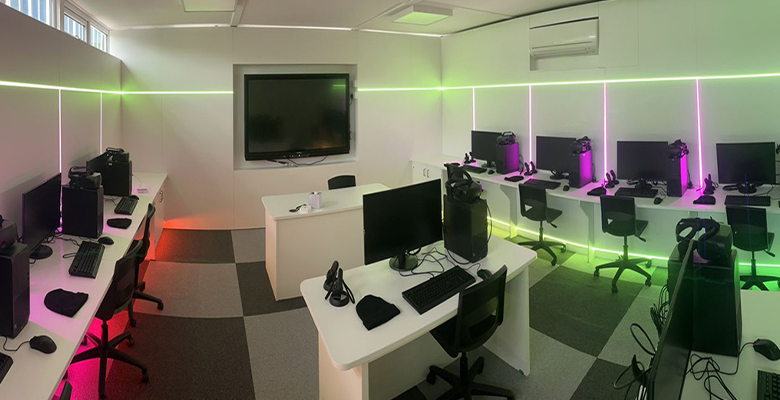
“…I am delighted to share with you that the VR room is completed! It looks incredible and will further enhance our exciting curriculum. The possibilities will be endless – pupils will be able to explore places they have never been to in geography lessons, shoot through space in science and travel back in time in history without leaving school!
To launch this truly ground breaking resource, all of the children will get the opportunity to visit our new Mission Control Room and VR room in the annexe in the first few weeks after Easter.”
Miss Janine Arrowsmith Head Teacher
The new VR technology will be used alongside traditional methods of teaching, Maths, English, Geography, Art, Music, History, Science to pupils from the age of 5 to 11.
Working closely with the IT Team, Green Meadow Primary school’s dream has become a reality, not only is this the first VR room in any primary school in England, the state of the art technology will help to enhance their curriculum even more and they can’t wait to get started!

